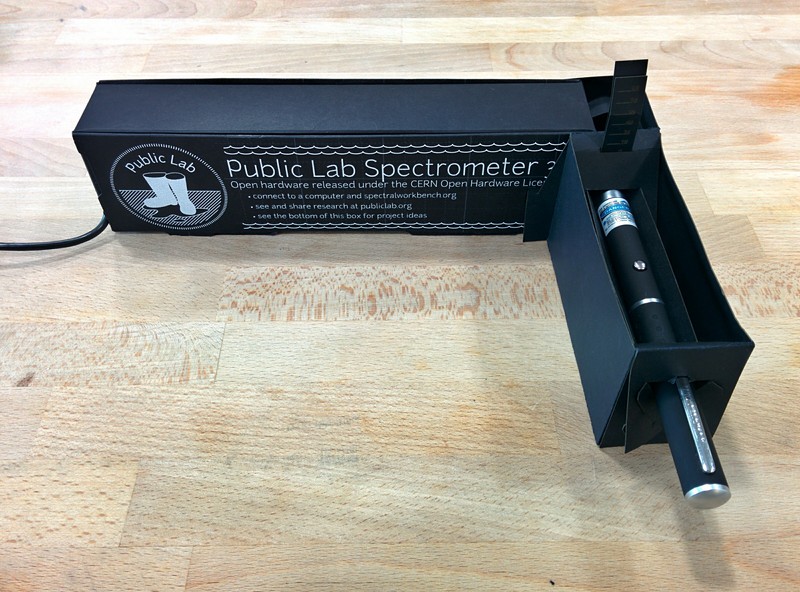
Oil Testing Kit
Draft page for the Oil Testing Kit.
Photo walkthrough
Illustrations
For the illustrated guide:
Related link to spectral challenge draft graphics: https://github.com/jywarren/spectralchallenge/issues/4
Parts list
Possible upgrade: nail polish bottles, with built-in bottlecap-swabs. An all-in-one, one-use pre-filled with mineral oil! Maybe you break off the swab and throw it away, or maybe it doesn't matter.
5oz mineral oil (baby oil -- the added fragrance doesn't fluoresce): $3 - http://www.amazon.com/Johnson-Baby-Oil-Kids-Ounce/dp/B000GCJM06/
- an eyedropper: $0.05 0 http://www.sciplus.com/p/CAP-WDROPPER_39038
- a 405nm blue/violet laser pen: $3 http://www.alibaba.com/product-gs/700677050/well_tested_405_nm_blue_laser.html, or http://www.ebay.com/itm/like/350812684726?lpid=82 to buy just one cuvettes
- 4 flat-sided jars: $0.35 each - http://www.sciplus.com/p/WHITCAP-BOTTLE_48212
- cotton swabs: $0.10
- olive oil test sample: $0.17
- paper instructions (yet to be made)
Draft instructions
The basic instructions will be something like:
- Put on latex or nitrile gloves
- Wet a cotton swab with mineral oil
- Rub it on the sample -- a suspected tarball or lump of oily residue -- until it gets brownish (it could take a little while for it to dissolve)
- Dip the dirty swab (that's like a pirate insult... :-P) in one of the square bottles which has been filled 2/3 with mineral oil, and repeatedly and gently dunk it until the brown stuff dissolves and "taints" the mineral oil.
- Keep dunking until it looks like a very very weak tea -- so you can see the coloration. We need to come up with a standard way to determine how dark... maybe a printed comparison strip?
- Cap the square jar and throw away the cotton swab (bag it if it's really gross).
- Throw away the gloves and wash your hands
Then, inside your spectrometer box (to reduce stray light and to protect your eyes from the laser light):
- Without looking at the laser light directly (it's bad for your eyes!!!), shine the laser through a hole in your box, so the laser shines through your jar perpendicular to the spectrometer opening. We'll illustrate this better but look at the Parts & Crafts note above.
- Move the laser up and down until you see both the bright laser peak on your SpectralWorkbench.org graph, as well as the broader range of colors that are the fluorescence.



















